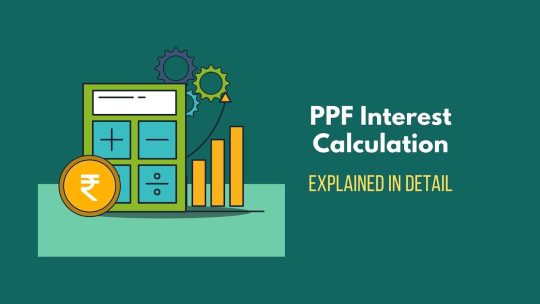In the fast-growing world, money plays an important role. While everyone is working hard to earn more money, one should also, at the same time, think about investing the money. Investing gives your money the potential to grow faster than it could in a savings account. If you have a long time until you need to meet your goal, your returns will compound. Basically, this means in addition to a higher rate of return on investments, your investment earnings will also earn money over time. Whatever it may be, one should never keep its money ideal.
Stocks and shares are on-demand now. Everyone wants to invest in stocks or buy shares. But the risk factor involved in them is also something that cannot be ignored. For the people who want to invest, but with less risk-factor, there are a plethora of government schemes and projects which can give you equally good returns.
Here is a list of 10 investment schemes and their benefits:
-
Pradhan Mantri Vaya Vandana Yojana (PMVVY)
Pradhan Mantri Vaya Vandana Yojana (PMVVY) is a Pension Scheme announced by the Government of India exclusively for senior citizens aged 60 years, who need a regular income on their investment. In this, the interest rate keeps varying depending on the financial year in which the investment is made.
Benefits of Pradhan Mantri Vaya Vandana Yojana
- For Financial Year 2021-22, PMVVY shall provide an assured pension of 7.40 percent per annum payable monthly. This assured rate of pension shall be payable for the full policy term of 10 years for all the policies purchased till 31st March 2022.
- The scheme is exempted from GST.
- On survival of the pensioner to the end of the policy term of 10 years, the Purchase price along with the final pension installment shall be payable.
- Loan up to 75% of Purchase Price shall be allowed after 3 policy years (to meet the liquidity needs). Loan interest shall be recovered from the pension installments and loan to be recovered from claim proceeds.
- The scheme also allows for premature exit for the treatment of any critical/ terminal illness of self or spouse. On such premature exit, 98% of the Purchase Price shall be refunded.
- On the death of the pensioner during the policy term of 10 years, the Purchase Price shall be paid to the beneficiary.
-
Senior Citizen Savings Scheme (SCSS)
A Senior Citizens’ Saving Scheme (SCSS) is a government-backed retirement benefits program. Senior citizens resident in India can invest a lump sum in the scheme, individually or jointly, and get access to regular income along with tax benefits. SCSS suits senior citizens looking for a high fixed rate of return and a regular income.
Benefits of Senior Citizen Savings Scheme
- Interest earned is fully taxable and to be added to one’s ‘Income from other sources.
- SCSS account includes a simple process and can be opened at any authorized bank or any post office in India.
- The account is transferable across India.
- Get an income tax deduction of up to Rs.1.5 lakh under Section 80C of the Indian Tax Act, 1961.
- The 5-year tenure of the account can be extended for another 3 years.
-
Sukanya Samriddhi Yojana (SSY)
Sukanya Samriddhi Yojana (SSY) is a long-term 21-year scheme aimed at saving for a girl child. SSY can be opened only in the name of a girl child below 10 years. If the child is 7 years, the maturity of SSY will happen when the child attains 28 years.
Benefits of Sukanya Samriddhi Yojana
- You need not make any deposits after 15 years until the deposit matures, which is 21 years from the date of account opening. You will continue to accrue the interest on the deposit.
- After the girl attains the age of 18, a maximum of 50 percent of the funds of the preceding year may be withdrawn for the girl’s higher education.
- In case of marriage, the SSY is allowed to be closed provided she has turned 18.
- SSY is a tax-friendly investment as it qualifies for tax benefit under Section 80C and even the interest earned is tax-free.
- Being a government-sponsored scheme, SSY carries the highest safety of principal and interest income.
-
Atal Pension Yojana (APY)
APY is an assured pension plan, open for any Indian citizen between 18 to 40 years. The administration of it is done by the Pension Fund Regulatory and Development Authority (PFRDA) under the NPS architecture.
Benefits of Atal Pension Yojana
- Under APY, the monthly pension would be available to the subscriber, and then to the spouse and after their death, the pension corpus, as accumulated at age 60 of the subscriber, would be returned to the nominee of the subscriber.
- To give an impetus to people to invest in the Atal Pension Yojana, the Government is giving tax benefits on contributions made to the scheme. The Atal Pension Yojana tax benefits can be availed under Section 80CCD (1B), to the tune of Rs. 50,000 over and above the Rs. 1.5 lakhs. This will help to reduce the taxable income of the subscriber.
- As it is a retirement benefit, therefore, depending on the contributions made, the monthly pension will be paid out.
-
Kisan Vikas Patra (KVP)
Kisan Vikas Patra (KVP) is designed to encourage long-term investment and savings amongst the masses. It is suitable for investors who are reluctant to risk-taking, have surplus money, and are looking for assured returns. It is available only at post offices, the KVP certificate can be purchased by an adult for himself or on behalf of a minor, or by two adults.
Benefits of Kisan Vikas Patra
- The amount invested doubles in 124 months and interest along with capital is paid only on maturity.
- Premature encashment is allowed after two and a half years subject to terms and conditions. However, the amount can only be withdrawn after two and a half years from the date of issue.
- Flexible investment instrument as there is no upper cap on KVP.
- Kisan Vikas Patra can be used as collateral for securing loans at preferred rates from banks.
- Transferable from one person to another as well as from one post office to another.
-
National Savings Certificate (NSC)
The National Savings Certificate (NSC) is a fixed income investment scheme that you can open with any post office branch. The scheme is a Government of India initiative. It is a savings bond that encourages subscribers – mainly small to mid-income investors – to invest while saving on income tax.
Benefits of National Savings Certificate
- On maturity, a fixed amount is received which is known right at the time of investment.
- The interest is fully taxable but importantly interest is reinvested for the initial four years and also qualifies for Section 80C benefit.
- Currently, (April 1, to June 30, 2021) the interest rate on NSC is 6.8 percent per annum, compounded annually and paid on maturity.
- As a government-backed tax-saving scheme, you can claim up to Rs 1.5 lakh under the provisions of Section 80C of the Income Tax Act, 1961.
- Banks and NBFCs accept NSC as collateral or security for secured loans. To do this, the concerned postmaster should put a transfer stamp on the certificate and transfer it to the bank.
- The interest you earn on your investment gets compounded and reinvested by default, though the returns do not beat inflation.
-
Bank fixed deposit
Bank fixed deposits have always been a popular source of regular income. Depending on the bank and tenure, currently, the interest rate is around 6 percent per annum across most tenure.
Benefits of bank fixed deposit
- Deposits are insured up to a maximum of Rs.5 lakh for all bank deposits, such as saving, fixed, current, recurring deposits under the Deposit Insurance and Credit Guarantee Corporation Act, 1961.
- FDs are risk-free investments. Unlike other investment tools, FDs are not market-driven. You get an assured sum of money at the end of the maturity period. This is thus an attractive investment for risk-averse investors.
- An asset is liquid when you can easily convert it into cash. FDs are liquid. Although the holder will be charged a penalty, FDs can be withdrawn as and when needed. Thus, you always have a certain sum of money to the bank on.
- The rate of interest on FDs is higher than that on saving deposits. For example, Axis Bank offers 4% interest on saving bank accounts, whereas the minimum interest that an FD attracts is 5.5%.
-
Floating Rate Savings Bonds 2020 (Taxable)
Floating Rate Savings Bonds 2020 (Taxable) comes with a 100 percent guarantee as they are government-backed investments. One can invest through branches of the State Bank of India, Nationalised Banks, and four specified private sector banks.
Benefits of Floating Rate Savings Bonds 2020
- They have a tenure of 7 years and the interest rate will keep varying during the tenure of the scheme.
- The rate of interest was set at 7.15 percent per annum payable half-yearly.
- The interest on the bonds will be payable at half-yearly intervals on Jan 1st and July 1st every year. There is no option to pay interest on a cumulative basis.
- Premature redemption shall be allowed for specified categories of senior citizens.
- The Bonds are open for subscription by Resident individuals and HUFs. Individuals can invest in the bonds in individual capacity or on a joint basis.
- The Investors will receive a periodical and regular income from the Bonds in form of interest pay-outs. This leaves the Investors a choice to use their income, either for savings or for consumption.
-
Public Provident Fund (PPF)
Public Provident Fund (PPF) is one of the most popular long-term saving schemes which focuses on inducing small savings like investments and accrue returns on the same. As a saving scheme by the government, PPF gives an agreeable rate of interest and returns on investments. This scheme tends to serve as a prerequisite for financial requirements at the time of retirement.
Benefits of Public Provident Fund (PPF)
- One may, however, exit after 5 years ( subject to conditions), avail a loan from the 4th year, and make partial withdrawals after the 7th year.
- While the investment qualifies for tax benefit under Section 80C, the interest earned is tax-exempt.
- Post maturity, the PPF account can be extended indefinitely in a block of five years.
- Currently, (April 1, to June 30, 2021) the PPF account carries an interest rate of 7.1 percent per annum, compounded annually, and is paid on maturity.
- The rate of interest for PPF accounts is revised by the Central Government every quarter. The PPF interest rate has historically been around 7.6% to 8%.
10. Post Office Time Deposit Account (TD)
It is a convenient alternative to the fixed deposits provided by banks. Through this fixed deposit scheme that is offered by the Indian Postal Services, an individual can earn a guaranteed return on the money deposited for a fixed period of time.
Benefits of Post Office Time Deposit
- Interest earned is fully taxable and to be added to one’s ‘Income from other sources.
- Currently, (April 1, to June 30, 2021) the interest rate on 5 year TD is 6.7 percent per annum, payable annually but calculated quarterly.
- You may withdraw the deposit amount even before maturity subject to certain terms and conditions laid by the post office.
- Additionally, the individual also earns interest with the return during the maturity period. The interest rate on POFD accounts is quite attractive, sometimes earning a higher interest rate than a bank FD.
Recommended Read: 6 Best investment apps in India







